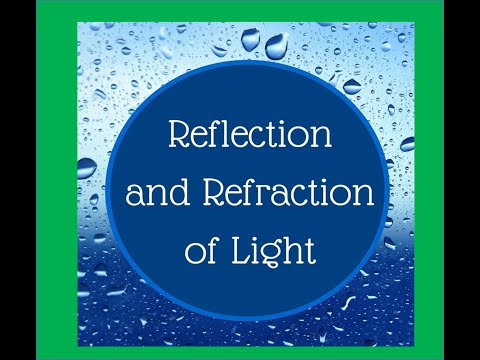Parenting(Age 5 to 8) | Academic | General | Parenting(Age 9 to 12) | Parenting(Age 13 to 16) | Oct 16, 2020
Difference Between Reflection And Refraction Of Light

When we get into studying optics, we are diving deep into acquiring knowledge about light. The light ray is the basic element in geometrical optics, it is a hypothetical construct that indicates the direction of the propagation of light at any point in space. A beam of light tends to move in a geometric pattern when it travels from one medium to another, comes to a focus point, or simply reflects from a surface.
The concept of optics tends to include various rules that help in determining the paths which are followed by the light rays. It is known that in a uniform medium, the rays travel in straight lines. The light emitted by a small localized source is represented by a collection of rays pointing outward from an idealized “point source.” A collection of parallel rays tends to represent the light which flows through space with uniform intensity. The common examples include light from a laser or from stars in the sky.
When we talk about light, reflection and refraction are the two phenomenon that mostly come into play. Both these concepts are strongly related to the propagation of a beam of light. The crucial difference between reflection and refraction is that reflection is the act of rebounding of the light wave in the same medium after striking the boundary of a different medium. However, before we get deeper into the difference between these two concepts, let us study these two topics separately for a wider perspective and more knowledge about these.
Reflection of Light
When the light rays travel in the atmosphere, it might move from one transparent medium to the other or reflect off a surface. When we specifically talk about the case when the light is reflected back from a smooth surface, we are addressing the reflection of light. According to the law of reflection, after the light reflects back from a smooth surface, the angle of the reflected ray tends to be equal to the angle of the incident ray.
The reflected ray always remains in the plane which is defined by the incident ray and the normal to the surface. This law of reflection clarifies the aspect of forming of images by curved and plain mirrors. Unlike mirrors, mostly all of the natural surfaces are rough on the scale of the wavelength of light, because of which the parallel incident light rays are reflected in many different directions. It is because of this diffused reflection that we can see the most illuminated surfaces from any position.
Refraction of Light
When light traveling in one medium enters into a second medium, a portion of the light is the reflection and a portion is transmitted into the second medium. When the light moves into another medium, the direction of the light is changed. In this case, we will say that the light is refracted. In the case of refraction, the index of refraction for any medium is a dimensionless constant equal to the ratio of the speed of light in a vacuum to its speed in that medium. The amount of bending of a light ray as it crosses a boundary between the two media is dictated by the difference in the two indices of refraction.
The Difference between Reflection and Refraction
Although, we now know that the aspects, reflection and refraction are completely different from each other. To get a better understanding, let us get a deeper look into the differences between them.
Reflection
- The phenomenon of reflection is known to occur in mirrors because of the smooth surfaces, which are not much present in other natural surfaces.
- Reflection can be defined as the path of light which is followed when it strikes the medium on a plane.
- The light that enters the medium would return to its same direction.
- If we consider the light waves, they will bounce from the plane and will change the direction.
- The angle of incidence of the light will be equal to the angle of reflection, in case of reflection.
Refraction
- This phenomenon of refraction usually occurs in lenses in which the medium is changed.
- Refraction is usually defined as the process of the shift of light when it passes through a medium that causes the bending of light.
- The light entering the medium will be traveling from one medium to another.
- The light waves which pass through the surface will simultaneously change from medium to medium.
- In refraction, the angle of incidence of the light will not be equal to the angle of refraction.
There are numerous concepts in optics, but the knowledge of reflection and refraction will create a strong basis for whoever wants to get into deeper knowledge in the domain. These are the processes that occur in real life and we must have a prominent understanding about it.















Post a Comment: